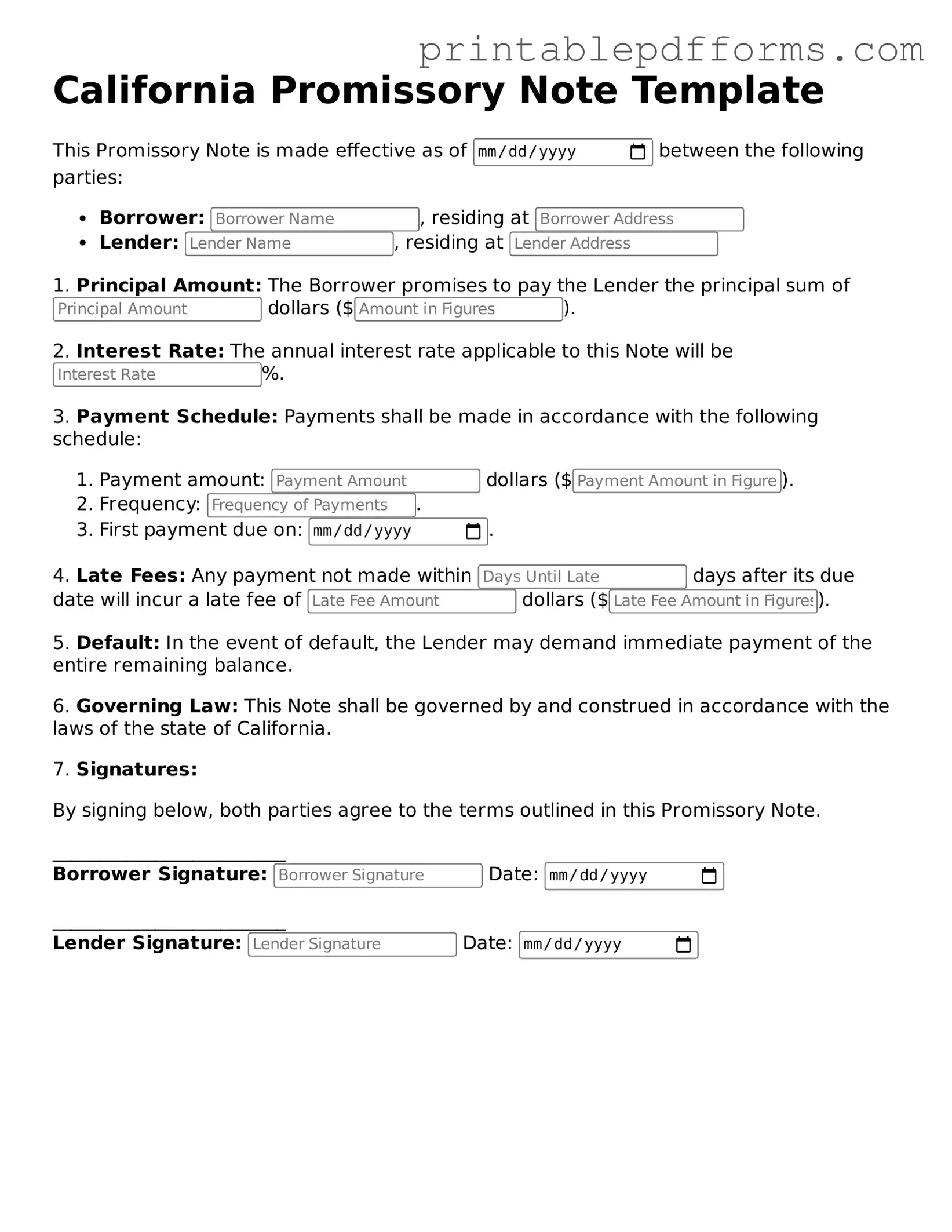California Promissory Note Document
A California Promissory Note is a written promise to pay a specific amount of money to a designated party at a defined time. This form serves as a crucial document in lending agreements, ensuring that both the borrower and lender understand their obligations. To get started, fill out the form by clicking the button below.
Create This Document Online
